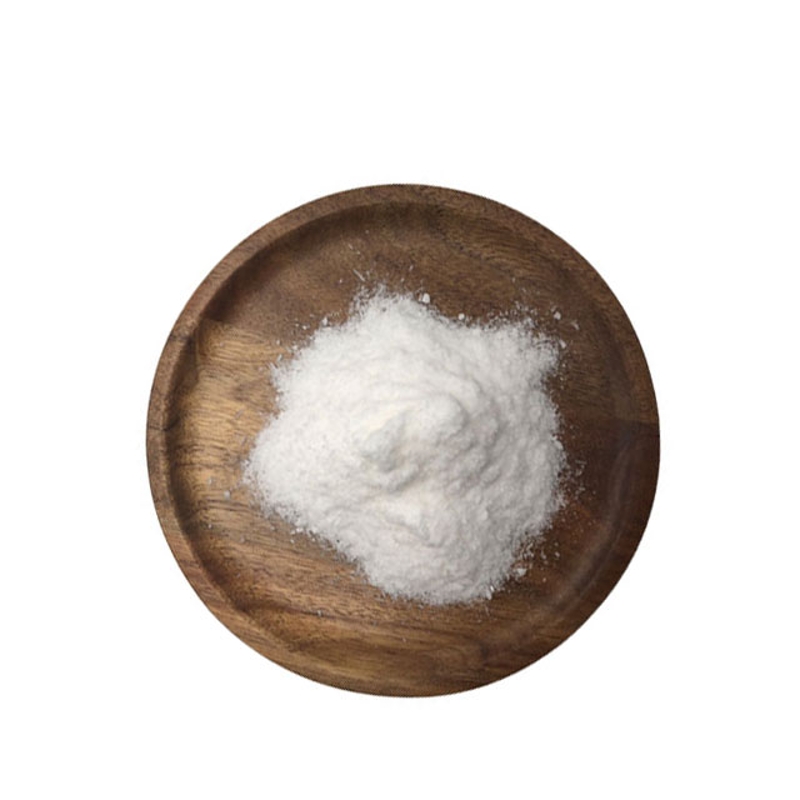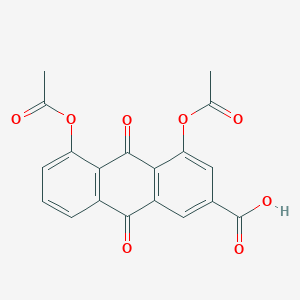-
Categories
-
Pharmaceutical Intermediates
-
Active Pharmaceutical Ingredients
-
Food Additives
- Industrial Coatings
- Agrochemicals
- Dyes and Pigments
- Surfactant
- Flavors and Fragrances
- Chemical Reagents
- Catalyst and Auxiliary
- Natural Products
- Inorganic Chemistry
-
Organic Chemistry
-
Biochemical Engineering
- Analytical Chemistry
- Cosmetic Ingredient
-
Pharmaceutical Intermediates
Promotion
ECHEMI Mall
Wholesale
Weekly Price
Exhibition
News
-
Trade Service
What is ANCA?
In 1882, anti-neutrophil cytoplasmic antibody ( ANCA) was first detected in the serum of 6 patients with primary focal segmental necrotizing glomerulonephritis by DAVIES et al
In 1985, VAN DER WOUDE discovered the presence of ANCA in the serum of patients with Wegener's granulomatosis (WG) and identified it as a specific serological diagnostic marker for WG.
ANC is an autoantibody targeting primary particles in neutrophils and monocytes , and is one of the serological markers for antineutrophil cytoplasmic antibody-associated vasculitis (AAV )
How to detect ANCA
At present, there are two main methods for ANCA detection:
Indirect immunofluorescence (IIF) using ethanol-fixed buffy coat leukocytes
●Enzyme-linked immunosorbent assay (ELISA), using purified specific antigens
Of the two techniques, immunofluorescence is more sensitive and can distinguish C-ANCA from P-ANCA , whileELISA is more specific and can be seen to detect PR3 and MPO antibodies
In the indirect immunofluorescence assay of ANCA, when serum from patients with ANCA-associated vasculitis was incubated with ethanol-fixed human neutrophils, there were two fluorescence patterns, namely:
●C-ANCA mode – For the cytoplasmic ANCA (C-ANCA) mode, the staining is diffuse throughout the cytoplasm
C-ANCA: There is heavy staining in the cytoplasm, while the multilobed nuclei (clear zone) are unresponsive
●P-ANCA pattern - The perinuclear ANCA (P-ANCA) pattern is generated by the staining pattern around the nucleus and represents an artifact of weak ethanol fixation
P-ANCA: Staining limited to the perinuclear region, no cytoplasmic reaction
Significance of ANCA positivity
In addition, patients with ANCA (+) alone and no clinical symptoms may also be false positives .
Summarize
ANCA is one of the important indicators for disease screening in rheumatology and immunology .
references:
[1] Qu Zhuan, Wang Huiming.
[2] Tan Liming, Jiao Anjun, Feng Xiaojing, Xu Liuyue, Tan Fuyan, He Siqi, Luo Heng, Chen Juanjuan, Jiang Yongqing, Li Hua.
[3] Liu Xia, Hu Weixin.
[4]uptidate:Clinical spectrum of antineutrophil cytoplasmic autoantibodies
What is ANCA?
What is ANCA?In 1882, anti-neutrophil cytoplasmic antibody ( ANCA) was first detected in the serum of 6 patients with primary focal segmental necrotizing glomerulonephritis by DAVIES et al
In 1882, anti-neutrophil cytoplasmic antibody ( ANCA) was first detected in the serum of 6 patients with primary focal segmental necrotizing glomerulonephritis by DAVIES et al
diagnosis
ANC is an autoantibody targeting primary particles in neutrophils and monocytes , and is one of the serological markers for antineutrophil cytoplasmic antibody-associated vasculitis (AAV )
neutrophil mononuclear cell vascular rheumatoid arthritis systemic lupus erythematosus
How to detect ANCA
How to detect ANCAAt present, there are two main methods for ANCA detection:
Indirect immunofluorescence (IIF) using ethanol-fixed buffy coat leukocytes
immunity●Enzyme-linked immunosorbent assay (ELISA), using purified specific antigens
Of the two techniques, immunofluorescence is more sensitive and can distinguish C-ANCA from P-ANCA , while ELISA is more specific and can be seen to detect PR3 and MPO antibodies
.
Therefore, if possible, it is best to choose these two methods to detect ANCA at the same time
.
In the indirect immunofluorescence assay of ANCA, when serum from patients with ANCA-associated vasculitis was incubated with ethanol-fixed human neutrophils, there were two fluorescence patterns, namely:
●C-ANCA mode – For the cytoplasmic ANCA (C-ANCA) mode, the staining is diffuse throughout the cytoplasm
.
In most cases, antibodies against PR3 cause this pattern, but MPO-ANCA is also possible
.
C-ANCA: There is heavy staining in the cytoplasm, while the multilobed nuclei (clear zone) are unresponsive
.
These antibodies are usually directed against protease 3 (PR3) and most patients have granulomatosis with polyangiitis (GPA)
.
These antibodies are usually directed against protease 3 (PR3) and most patients have granulomatosis with polyangiitis (GPA)
●P-ANCA pattern - The perinuclear ANCA (P-ANCA) pattern is generated by the staining pattern around the nucleus and represents an artifact of weak ethanol fixation
.
Following ethanol fixation of the neutrophil substrate, positively charged granule components rearrange around the negatively charged nuclear envelope, resulting in perinuclear fluorescence
.
In patients with vasculitis, the antibodies responsible for this pattern are usually directed against MPO (and only occasionally against PR3)
.
P-ANCA: Staining limited to the perinuclear region, no cytoplasmic reaction
.
In patients with vasculitis, antibodies are usually directed against myeloperoxidase (MPO)
.
However, the P-ANCA pattern was also seen with autoantibodies against many other antigens, including lactoferrin and elastase
.
Non-MPO P-ANCA can be found in a variety of non-vascular inflammatory diseases
.
Significance of ANCA positivity
Significance of ANCA positivity
In addition, patients with ANCA (+) alone and no clinical symptoms may also be false positives .
It is recommended that patients change hospitals for re-examination after a period of time
.
Summarize
SummarizeANCA is one of the important indicators for disease screening in rheumatology and immunology .
Clinicians can make a more accurate diagnosis based on the clinical symptoms of patients combined with the indicators of ANCA
.
It should be noted that ANCA positive is not necessarily an autoimmune disease, but may also be caused by drugs, infections , or even false positives.
Clinicians should look at this indicator dialectically
.
references:
[1] Qu Zhuan, Wang Huiming.
Research progress on biomarkers of anti-neutrophil cytoplasmic antibody-related glomerulonephritis [J].
Chinese Journal of Practical Diagnosis and Treatment, 2021,35(07):739-742.
DOI : 10.
13507/j.
issn.
1674-3474.
2021.
07.
022.
[2] Tan Liming, Jiao Anjun, Feng Xiaojing, Xu Liuyue, Tan Fuyan, He Siqi, Luo Heng, Chen Juanjuan, Jiang Yongqing, Li Hua.
The clinical value of anti-neutrophil cytoplasmic antibody detection in systemic vasculitis [J].
Laboratory Medicine , 2018, 33(02):101-105.
[3] Liu Xia, Hu Weixin.
Clinical research progress of anti-neutrophil cytoplasmic antibody-associated vasculitis [J].
Journal of Postgraduate Medicine, 2016, 29(03): 323-326.
DOI: 10.
16571/j.
cnki .
1008-8199.
2016.
03.
022.
[4]uptidate:Clinical spectrum of antineutrophil cytoplasmic autoantibodies
leave a message here







